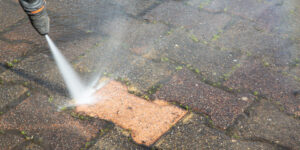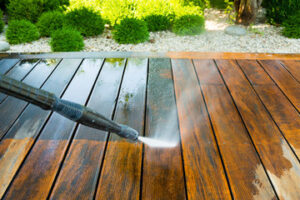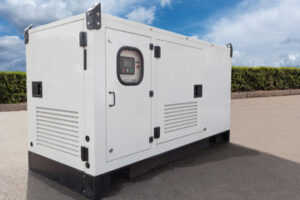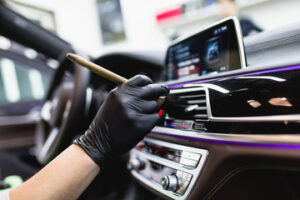Roadside emergencies can occur when you least expect them. Whether caused by a flat tire or an empty gas tank, they can be stressful experiences.
Understanding what services are available through your roadside assistance provider can help make the situation as manageable as possible. However, excessive claims may impact your rates. Contact Emergency Roadside now!

A dead battery is the bane of every motorist, but a quick jump-start can help you get to your destination and back without too much fuss. Jumping your car isn’t hard, but you do need to have a few things ready. For one, ensure you have the correct cables and a willing friend or family member to assist. Also, remember to disconnect the cables in reverse order so they don’t touch each other. If your car dies immediately after the jump, this is a sign it’s time for a battery replacement.
If you plan to use a friend or family member’s vehicle, ensure it has a fully charged battery and the same voltage system as yours. Then locate the batteries and correctly position them so that their clamps can reach. Make sure both vehicles are in park and the hoods are open before connecting the cables. The red clip should go to the positive terminal of the working battery and the black clip should connect to an unpainted metal surface on the vehicle chassis or engine block. If you have trouble finding the negative terminal, check the owner’s manual for your specific model to determine where it’s located.
Once the red and black clips are connected, start the car providing the jump. After the vehicle has a minute or so of runtime, turn off the ignition and disconnect the black cable from its negative terminal. Then, disconnect the red clip from the dead battery and remove both clamps from the vehicle. Once you’ve disconnected the cables, be sure to check under the hoods of both cars for any corrosion or other issues that may interfere with future jumps.
If you don’t have a friend or family member to provide a jump, consider buying a portable battery jump starter that you can store in your trunk. These small boxes cost about $150 and have the power to jump your car without requiring another vehicle or clunky cables. Just follow the manufacturer’s instructions carefully to avoid damaging the device or causing injuries if used improperly.
Flat Tire Change
When you get a flat tire, you need to call roadside assistance. While most cars have a spare tire in the trunk and a jack, it’s not always easy or safe to change a car tire on the side of the road. Fortunately, many roadside services will send someone to change your tire and can also help with other issues. If you have car insurance with a comprehensive policy, the service may even offer to replace your damaged tire if it isn’t fixable.
Before calling for a flat tire change, make sure to move your car into a safe place away from traffic. Park in a parking lot, or pull to the shoulder on the side of the highway and turn on your hazard lights. You should also set up reflective triangles or flares to warn other motorists of your problem. If possible, put the wheel chocks in your emergency kit behind the wheel of the car you’re changing, or large rocks if you don’t have them. This will help prevent your car from moving when you raise it with the jack.
If you’re able to do so, take your spare tire out of the trunk and find a level spot for your car to sit. You’ll also need the jack, so make sure to check its location in the trunk before you need it. Before you jack the vehicle up, it’s a good idea to block the tire that’s not flat with something (such as a brick) so that the car is less likely to roll away from you when you remove the jack.
Once your vehicle is in a safe position, turn off the ignition and put your car in “Park.” Before you start to change the tire, turn on your hazard lights and set up reflective markers or flares. You should also put your jack in the location specified by the owner’s manual to reduce the risk of damaging your car or harming yourself by lifting the vehicle improperly.
Once you’re parked, check your spare tire to see if it’s inflated. It should be inflated to 60 psi, but if it’s low, you can use a portable air pump or add more air to the spare before swapping it in. If you don’t have a spare, try to repair the puncture or use a tire sealant to temporarily patch it. You can also check if your car has a tire repair or run-flat option, which is designed to work for a certain number of miles after being punctured.
Fuel Delivery
Running out of fuel can be a major roadside emergency, especially in an unfamiliar location or during adverse weather conditions. This type of situation can easily be avoided by knowing how to recognize when your tank is low and having the number for a roadside fuel delivery service handy. Fuel delivery services provide immediate refueling for vehicles directly at the scene, eliminating the need for motorists to leave their vehicle to find a gas station. This is an invaluable service for long-distance drivers who may miscalculate their fuel consumption or encounter unexpected route changes that require additional fuel.
When choosing a roadside assistance provider for on-demand fuel delivery, look for a service that offers rapid response times, extensive coverage areas and competitive pricing. Additionally, select a company that has experience in working with large trucks like semi-trucks so they are equipped to handle the process safely and quickly. Finally, be sure to choose a company that provides 24/7 availability for roadside assistance and has extensive customer reviews as this can help you feel confident in their abilities during an emergency situation.
In the event of a roadside fuel emergency, pull over to a safe spot and activate your hazard lights. Then, wait for the service technician to arrive and follow their instructions regarding safety measures while they are refueling your vehicle. It’s important to stay inside your vehicle and maintain a safe distance from traffic while this process is underway.
The most effective way to prevent fuel-related roadside emergencies is through proper planning and awareness. Ensure your vehicle’s tank is filled to the appropriate level to accommodate your intended destination, utilize onboard trip computers or fuel consumption calculators to estimate fuel usage and plan refueling stops accordingly. Also, consider utilizing a portable fuel container as a backup measure in the event that you do run out of gas on a long journey. With these tips in mind, you can avoid fuel-related roadside emergencies and enjoy peace of mind during your travels.
Lockout Service
Getting locked out of your car is one of the most common roadside issues, and it’s also typically a minor problem that can easily be solved with professional help. When you call a lockout service, you’ll have a trained professional on the way to unlock your vehicle without damaging it. This type of service is usually available 24/7, and it can save you time, stress, and money compared to trying to unlock your vehicle yourself with a coat hanger or other DIY method.
Vehicle lockout services are available from most roadside assistance providers and are often included with a broader roadside assistance plan, which can include jump-starts, flat tires, and fuel delivery. Some plans are provided by auto clubs, while others are offered through a variety of other sources, including auto insurance companies and even the carmakers themselves.
The key to preventing an accidental lockout is making sure you double-check the doors before leaving your car, especially when you’re in a rush. It’s also a good idea to carry a spare key in case you forget your keys in the car or experience a malfunction with your electronic key fob.
Most roadside assistance programs have a set fee for unlocking a vehicle, and it’s typically less expensive to get this service through a roadside assistance provider than through an automotive locksmith. If you’re considering a roadside assistance plan, be sure to read the fine print to understand what is and isn’t covered.
While you may be tempted to try a DIY solution like using a coat hanger to open your car door, these items can often damage your vehicle and set off the alarm. Roadside assistance technicians use professional tools and techniques to unlock vehicles quickly, reducing your wait time and stress. Plus, their work is backed by a guaranteed not to exceed price that is often lower than what you’d pay for a traditional automotive locksmith. You can find a nearby roadside assistance provider near you by opening the HONK app and entering your location, help needed, and a description of the problem.








